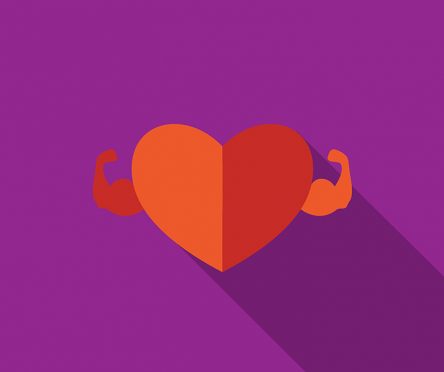By Dr. Jeffrey Kegel
Cardiologist, Hartford HealthCare Medical Group
Windham Cardiology
Until the recent COVID-19 pandemic, heart disease had been the leading cause of death for men, women and people of most racial and ethnic groups in the United States.
The statistics are staggering:
- One person dies every 36 seconds in the United States from cardiovascular disease.
- About 655,000 Americans die from heart disease each year — that’s 1 in every 4 deaths.
- Every year, about 805,000 Americans have a heart attack.
That sounds serious. And scary. But even small changes can go a long way toward improving your heart health and preventing a catastrophic heart attack or stroke. If you’ve already fallen off from your “live healthier” resolutions, use February as American Heart Month to really buy in to modifying your lifestyle.
Don’t go overboard and overwhelm yourself. Pick two or three changes, focus on them, and go from there. Think long-term. And, as always, contact your doctor for specific questions and recommendations regarding exercise and diet.
What is Cardiovascular Disease?
Cardiovascular disease is an umbrella term that covers a lot of ground. Some basic definitions are always helpful.
Coronary artery disease: blockages in arteries that fuel the heart muscle.
- The heart muscle needs highly oxygenated blood to function properly.
- If arteries get clogged with cholesterol (called atherosclerosis or “hardening of the arteries”), adequate blood can’t get through to the heart muscle.
- A heart attack is heart muscle damaged from lack of oxygen, often happening suddenly.
- When a blockage becomes severe or develops suddenly, a patient may require a procedure called an angioplasty with a stent to relieve the blockage and improve blood flow.
- Over time, a lack of adequate blood flow to the heart can lead to heart failure, when the heart “pump” is no longer able to meet the demands of the body.
Arrhythmia: An irregular or abnormal heart rhythm. Certain arrhythmias can increase the risk of stroke in some people.
Stroke: When brain cells die from insufficient oxygen after a blood flow blockage or ruptured artery.
- Similar to the heart, the brain cells need a lot of oxygen as well.
- Can be due to a blocked artery (most common) or bleeding in the brain itself.
- Any lack of oxygen to the brain can lead to symptoms. Get help immediately!
Aneurysm: A large bulge that forms anywhere in the body, but usually in the brain, aorta, spleen or legs.
- Enlargement of a blood vessel due to weakening of the wall.
- Can rupture once it reaches a critical size.
- Often associated with: high blood pressure, smoking, family history of aneurysms.
What Contributes to Cardiovascular Disease?
Many factors contribute to cardiovascular disease, including genetics. Although it’s true you can’t change your family, you can change your lifestyle. That can have a big impact on your cardiovascular health.
High blood pressure is a well-known contributor to heart disease. A normal, healthy blood pressure is at or below 120/80. The top number is the systolic pressure, when the heart pumps blood into the arteries. The bottom number is the diastolic pressure, when the heart relaxes and fills with blood for its next beat. Both are important.
Diabetes leads to elevated glucose (sugar) in the blood, which can damage arteries. Excess sugar damages the innermost lining of the arteries, leading to accelerated atherosclerosis or plaque formation. Besides the heart and blood vessels, it also often damages the eyes and kidneys over time.
High cholesterol is also a common factor. Cholesterol is a waxy substance. Your liver makes all the cholesterol your body needs to build cells and make vitamins and other hormones. The remainder of the cholesterol in your body comes from foods from animals, including dairy products.
Your total cholesterol is a combination of:
- HDL cholesterol (“helpful”): Typically, the higher the better.
- LDL cholesterol (“lousy”): The lower the better.
- Triglycerides: Store excess fat energy in the body.
Excess cholesterol can join with other substances to form a thick, hard deposit on the inside of the arteries. This can lead to atherosclerosis, linked to many of the conditions mentioned above.
Other factors (that you can control) are smoking, lack of exercise, obesity, obstructive sleep apnea and stress.
What Can I Do?
Increase your activity. The American Heart Association recommends 30-40 minutes of moderate to vigorous exercise, three to four times a week. This sounds like a lot to someone who never exercises — but it’s OK to start slowly.
Find something you enjoy. You don’t have to train for a marathon. Find hiking trails and ask a friend to join you. Walk on the beach. Take a bike ride. Consistency is what’s important.
Always check with your doctor to make sure it is safe before starting an exercise program.
Make healthy food choices. This isn’t a diet, because that suggests it’s temporary.
Here are some tips that are pretty easy to incorporate into your life:
- Pay attention to food labels and serving sizes.
- Cut your portion size as a first step (use a smaller plate at dinner).
- Eat fewer processed foods.
- Eat more fresh fruits, vegetables and whole grains (frozen veggies are OK).
- Add whole grains with fiber, such as brown rice, oatmeal and whole-grain breads.
- Switch to skim or low-fat dairy products.
- Eat fish high in omega-3 fatty acids, such as salmon, trout and herring.
- Stop smoking.
- Limit alcohol: no more than two drinks a day for men, one a day for women.
- You can still treat yourself from time to time, but will quickly find yourself wanting “bad stuff” less often.
Find time to relax!
- Increased stress can lead to higher risk of cardiac events and stroke.
- Deep breathing.
- Meditation.
- Time with friends and hobbies.
- Walks outside.
Get adequate sleep.
- Turn off electronic devices at least a half-hour before bed.
- Avoid caffeine at night.
- Be evaluated for sleep apnea if at risk.


